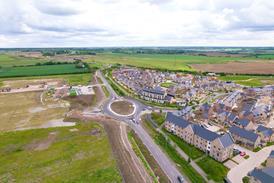- News

All the latest updates on building safety reformRegulations latest
- Focus
- Home
- News
- Focus
- Comment
- Events
- CPD
- Building the Future
- Jobs
- Data
- Subscribe
- Building Boardroom
Now is not the time to panic about low planning approvals
By Paul Smith2025-10-07T05:00:00

As poor statistics continue to roll in Steve Reed and Matthew Pennycook must hold their nerve, stick to their plan and be patient, argues Paul Smith
The new secretary of state, Steve Reed, wasted no name in reaffirming his commitment to the government target to build 1.5 million new homes in this parliament. Almost immediately following his appointment he pledged to “Build, Baby, Build” - a slogan seemingly appropriated from the Conservative YIMBY group in a sign of the growing political consensus around home building.
Already registered? Login here
To continue enjoying Building.co.uk, sign up for free guest access
Existing subscriber? LOGIN
Stay at the forefront of thought leadership with news and analysis from award-winning journalists. Enjoy company features, CEO interviews, architectural reviews, technical project know-how and the latest innovations.
- Limited access to building.co.uk
- Breaking industry news as it happens
- Breaking, daily and weekly e-newsletters
Get your free guest access SIGN UP TODAY

Subscribe now for unlimited access
Subscribe to Building today and you will benefit from:
- Unlimited access to all stories including expert analysis and comment from industry leaders
- Our league tables, cost models and economics data
- Our online archive of over 10,000 articles
- Building magazine digital editions
- Building magazine print editions
- Printed/digital supplements
Subscribe now for unlimited access.
View our subscription options and join our community


















